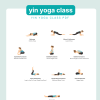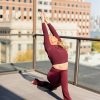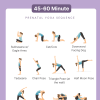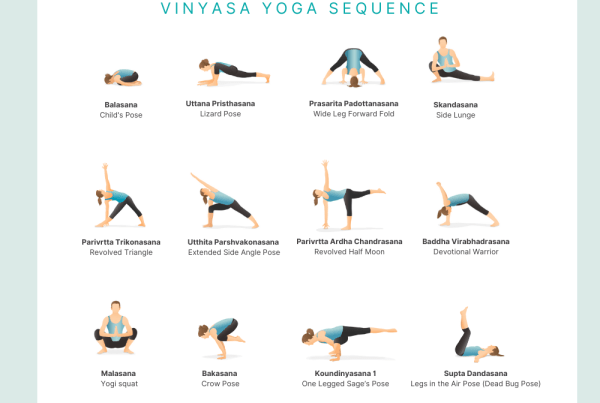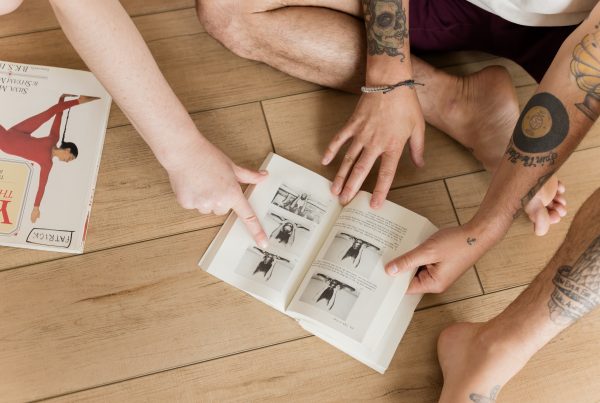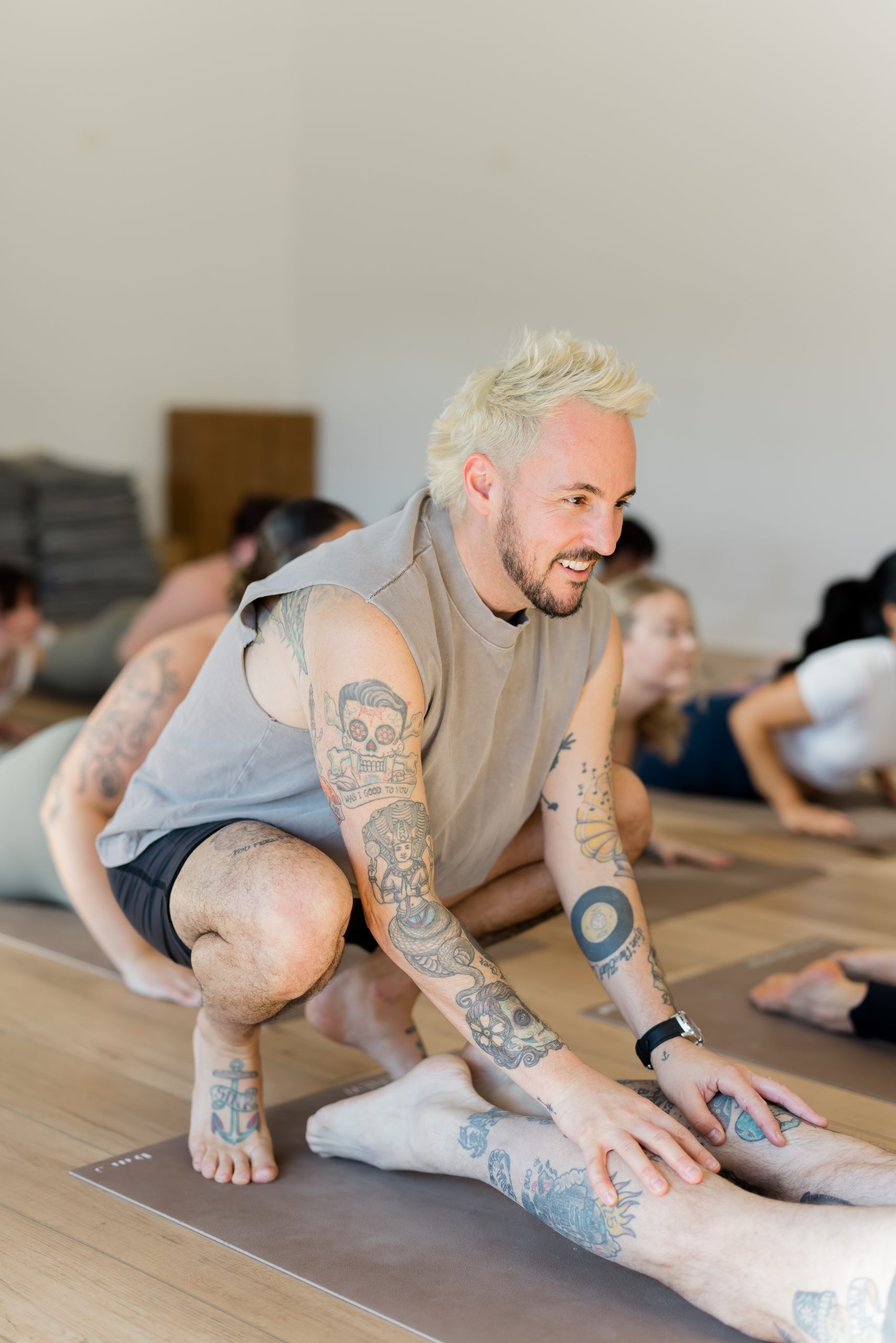
The first time I brought hands-on adjustments back after COVID, a student said to me after class:
“I didn’t realize how much I missed that.”
It was a simple directional assist in Downward Dog—nothing dramatic. But for them, it was the difference between hearing the cue and feeling it. And it hit me: plenty of students still want this. They’ve noticed the shift away from adjustments, and for some, it feels like a piece of the practice is missing.
And yet, here’s the truth: hands-on adjustments have almost disappeared in a lot of yoga classes.
And yeah—I get why.
- Too many teachers crossed boundaries. Some out of ignorance, some out of ego, and some out of flat-out abuse of power. The damage was real. It broke trust between students and teachers.
- Trauma-informed teaching reshaped the way we think about touch. What feels supportive to one student can feel unsafe or triggering to another.
- Then COVID hit, and we literally couldn’t touch anyone. For nearly two years, the “no adjustment” rule wasn’t a choice—it was a necessity.
So now, many teachers don’t adjust at all. And I’ll be honest: I get a little worried when I think about that.
Because after 18 years of teaching, I’ve seen firsthand how powerful a well-timed, respectful adjustment can be. And I’ve also heard plenty of students tell me they miss them. Students who found clarity, connection, and support through touch have noticed the shift away from adjustments—and they feel something valuable has been lost.
A Little History
Adjustments have been part of yoga teaching for a long time. But not all traditions emphasize them equally.
In Iyengar yoga, where I’ve spent much of my own training, adjustments (and props) are central to the pedagogy. The teacher’s touch is precise, often technical, and meant to guide students toward alignment and awareness they couldn’t find on their own. It’s about clarity, not correction.
In Ashtanga, adjustments are more about deepening—taking a student further into the pose than they might go on their own, sometimes quite forcefully.
In Vinyasa yoga, adjustments have often been less systematic. Some teachers leaned on them to “fix” poses, others avoided them entirely.
The truth is: adjustments have always been a mixed bag. For some students, they were life-changing; for others, they were confusing, uncomfortable, or even harmful.
But when done well, they’re one of the most powerful teaching tools we have.
Why Hands-On Adjustments Still Matter
Here’s the thing about teaching yoga: words don’t always land.
You can cue “press the thigh back,” “lift the sternum,” or “draw the shoulder blades in” ten different ways—and still watch a student struggle. Then you place a steady hand, a supportive press, or a gentle lift, and suddenly—click. The body gets it.
That’s the power of touch.
- It brings awareness where the mind can’t quite locate it.
- It can bypass the noise of words and give the nervous system direct feedback.
- It offers stability in moments of challenge.
- It communicates presence, care, and connection when done respectfully.
And let’s not forget—plenty of students want adjustments. For them, touch is one of the ways they learn best. It’s one of the ways they feel seen and supported.
B.K.S. Iyengar once said: “Words cannot convey the total value of yoga. It has to be experienced.” Sometimes, touch is the bridge that takes a student from hearing your words to truly experiencing what you mean.
Why They Disappeared (And Why That Matters)
It would be easy to say, “Well, adjustments are too complicated—let’s just stop doing them.” And honestly, a lot of teachers have.
But here’s what worries me: if we remove touch entirely from the teaching toolkit, we’re taking away a channel of communication that has been part of the teaching of yoga.. And we’re ignoring the many students who still value and appreciate adjustments when they’re offered thoughtfully.
I’m not saying every student needs adjustments. Plenty don’t.
I’m not saying every class requires them. Plenty don’t.
But I am saying that when used skillfully—with consent, respect, and clarity—adjustments can still be one of the most effective ways to help students learn.
Best Practices for Hands-On Adjustments in the Post-COVID Era
So, how do we bring adjustments back into modern teaching—without repeating the mistakes of the past?
Here’s how I approach it today:
1. Consent Is Non-Negotiable
- Ask every time.
- Use consent cards or verbal check-ins.
- Recognize that consent isn’t permanent. A student who said “yes” before class might say “no” mid-practice.
2. Less Is More
- One adjustment, one action. Don’t try to “fix” the whole pose with your hands.
- Think clarity, not choreography.
3. Stay Professional
- Your touch should feel like teaching, not intimacy.
- Stick to bones, joints, and large muscle groups.
- No lingering. No ambiguity.
4. Respect Personal Space
- Notice body language. If a student stiffens, pulls away, or looks uneasy—stop.
- Never force someone deeper into a pose. Adjustment isn’t about making the pose “better,” it’s about helping the student feel direction.
5. Pair It With Words
- Say what you’re doing as you do it.
- Use your voice to frame the action so the student can replicate it without your hands next time.
The Bigger Picture
Here’s what I’ve learned after nearly two decades of teaching: adjustments aren’t the centerpiece of yoga teaching. They never were.
The core of great teaching is your presence, your sequencing, your words, your ability to create an environment where students feel safe to explore. That’s what builds trust.
But adjustments are still a tool. One worth keeping in the belt.
Because when words don’t cut it, when a student needs to feel something in order to understand it—touch can bridge the gap.
The point isn’t to bring adjustments back the way they used to be. It’s to bring them back better. With consent. With clarity. With respect for every student’s body and personal space.
Because at the end of the day, yoga is about connection. And sometimes, the quickest way to help a student connect—with their body, with the pose, with the practice—is through the quiet, steady guidance of touch.
Teaching Tips: 3 Adjustments I Still Use Every Week
Here are a few simple, respectful adjustments I return to again and again in my classes:
- Downward Dog – Lengthening the Spine
A drawing back of the thighs helps students feel how to send the legs back and lengthen the spine, without collapsing the shoulders. - Trikonasana – Firming the Outer Hip Inward
Using your own outer hip as a point of contact, you can give a directional assist into the student’s outer hip. This firming action stabilizes the pelvis and allows the trunk to open more fully. - Janu Sirsasana – Supporting the Hinge
Placing a steady hand on the bent-leg thigh and guiding it to roll outward allows the spine to extend and hinge more freely over the straight leg.
These are not about “fixing” anyone’s pose—they’re about offering clarity when words alone don’t do the job.
Final Word:
Don’t abandon adjustments.
Refine them.
They’re not the whole toolbox, but they’re still one of the sharpest tools we’ve got—if we use them wisely.
—Patrick Franco


